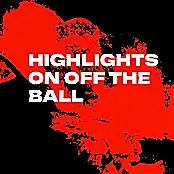Today marks a step into the unknown for the Tipperary footballers.
As George Hannigan puts it in an interview with the Sunday Independent today, he's "usually watching games on television with his feet up" during this phase of the championship.
An All-Ireland semi-final is a mountain the Premier County has not scaled in 81 years, and they're about to face a team who have made something of a routine out of getting to this stage of the summer. This is Mayo's sixth consecutive All-Ireland semi-final appearance and on the five previous occasions, they have invariably qualified for the showpiece.
Why they continue to struggle with finishing the job when they make it to that stage is a mystery which stretches back to 1951. In any case, the men from the House of Pain will carry baggage into this game.
Conversely, Tipperary will be travelling much lighter. The 81-year gap doesn't heighten any pressure. Rather, it emphasises the progress they've made with little to no tradition backing them. And the major drop off in personnel at the outset of this season just adds gravy to the narrative.
GAA and Ireland's feud with itself
It was just two years before Ireland had fully endorsed the Irish constitution when Tipperary last progressed to this stage of the football championship. Hostilities of the Irish Civil War were settled for just over a decade, and GAA players were invariably prohibited from dabbling in 'foreign games.'
And the ban was strictly enforced as President of the GAA, Douglas Hyde, learned to his cost in 1938 when he was banned from the GAA for attending an international soccer match.
The popularity of Gaelic Games was even used to drive up recruitment numbers in Irish Security Services. One advertisement from the late 1920s contained a photograph of recruits playing Gaelic games to give the impression that joining the Armed Forces would offer increased opportunities to play our national sports.
Tipperary v Cavan: All-Ireland Semi-Final 1935
Even the Croke Park that hosted that game was perceived to have strong links with the violence of Easter 1916. The myth of Hill 16 being built from the rubble of the GPO increased the historical significance of the stadium, a belief which has since been disproved due to the fact that the majority of the stand was built by 1915.
Tipperary were defeated by Cavan that day, with a last minute score clinching a two point win for the Ulster side. That was the last time Tipperary were afforded that opportunity.
Today they attempt to mount the summit again.
Download the brand new GoLoud App in the Play Store & App Store right now! We've got you covered!
Subscribe to OffTheBall's YouTube channel for more videos, like us on Facebook or follow us on Twitter for the latest sporting news and content.








